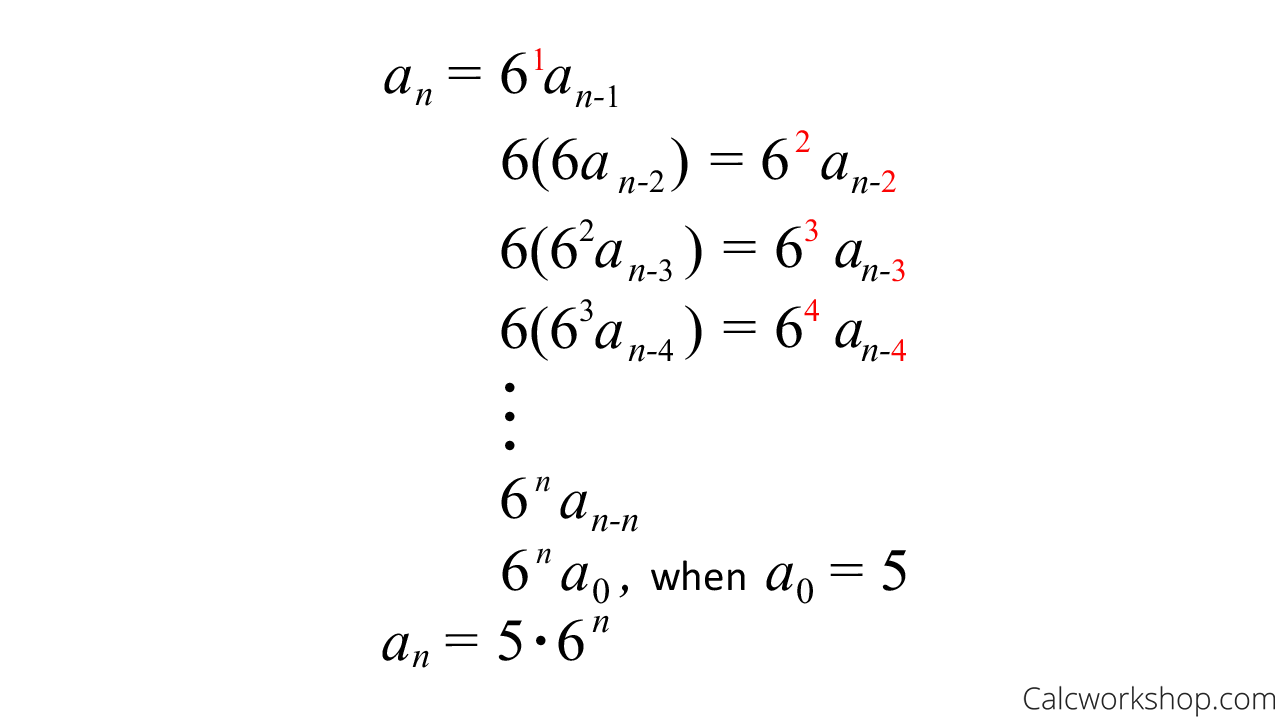Is there a way to transform a recursively defined sequence into an explicitly defined sequence?

Jenn, Founder Calcworkshop®, 15+ Years Experience (Licensed & Certified Teacher)
Yes!
Through iteration.
In our previous lesson, we learned that we could specify an array of numbers recursively or explicitly, and we investigated some essential formulas and summations as they help us in defining sequences.
But if you remember, we had to do a lot of “guess and check” to see if our answer was valid.
Our goal in this lesson is to solve a recurrence relation for a closed-form solution using iteration, also known as backtracking, that helps eliminate most of the guesswork.
The idea behind this method is to substitute terms of the sequence by expanding, or iterating, the recurrence relation as a sum of terms dependent on n and the initial condition. We do this by working backward from the last term.
Example
It is our job to solve the recurrence relation using iteration.

Recursively Definition — Example

Partial Term Sequence
Recursive Backtracking
This means we can generalize a sum of terms that is dependent on n only.
And that is how we use iteration, or backtracking, to solve recurrence relations.

Iteration Closed Form — Example
Together we will work through countless examples in detail. We will use iteration and our summation techniques as well as our rules for geometric series, summation for factorials and exponents, and even algebraic sequences to help us solve more challenging recurrence relations and find closed-form solution.
Let’s get to it.
Video Tutorial w/ Full Lesson & Detailed Examples
1 hr 39 min
Get access to all the courses and over 450 HD videos with your subscription
Monthly and Yearly Plans Available
Still wondering if CalcWorkshop is right for you?
Take a Tour and find out how a membership can take the struggle out of learning math.